The thermal security camera market heats up with uncooled models
Tim Compston, Features Editor at Security News Desk, takes the temperature of the fast growing thermal security camera market.
Wherever you look demand for thermal security camera technology is certainly heating up. This is underlined by the sheer number of new uncooled camera models coming onto the market and not just from traditional thermal vendors but CCTV camera providers as well, all keen to take a piece of the pie. Certainly a key factor in the surge of interest in thermal has been the marked fall in the cost of sensors used in uncooled cameras, and ultimately, the purchase price.
Not surprisingly, as technology has moved on apace there had been a blurring of the lines between the capabilities of uncooled models and the much more specialised – and expensive – cooled cameras which, historically, have tended to dominate in military and border security type deployments. In fact, with the price tag for cooled five times – or more – that of uncooled it is no wonder that uncooled is firmly in the thermal camera driving seat.
The case for uncooled
Martina Lundh, Global Product Manager for thermal cameras at Axis, agrees that for security applications uncooled models definitely have the edge over cooled: “We don’t really see any use for cooled for security because there is too much maintenance involved.”
From an operational perspective, the beauty, of course, with thermal cameras is their ability to shore-up perimeter and area security, in viewing conditions where conventional, visible light-based, solutions might struggle to deliver. To put this into context, at night when a conventional camera with IR might see tens of metres the corresponding thermal camera’s reach could stretch several kilometres – a dramatic difference.
Returning to Martina Lundh from Axis, she reckons that thermal is a very good fit for detection but where full identification is a prerequisite then the addition of a visual camera whose operation is coordinated with the thermal makes sense: “You can apply these together very easily – preferably with IP – by basically using the thermal for detection and then sending coordinates to a PTZ camera for identification.
 Ashley Wyton, International Sales Manager at 360 Vision Technology – a UK manufacturer of surveillance cameras like the Predator which include thermal versions – emphasises that the benefits of thermal are long-standing: “It is the only technology that operates in true 24 hour conditions, throughout the night in total darkness and in most obscurants such as dust, sand and also light fog.”
Ashley Wyton, International Sales Manager at 360 Vision Technology – a UK manufacturer of surveillance cameras like the Predator which include thermal versions – emphasises that the benefits of thermal are long-standing: “It is the only technology that operates in true 24 hour conditions, throughout the night in total darkness and in most obscurants such as dust, sand and also light fog.”
Regarding where thermal tends to be taken up, Wyton says that people are seeking to deploy these type of cameras where, without question, there is an asset that needs to be protected: “They really don’t want any ambiguity around ‘can we see people there?’ or ‘can’t we see people there?’ and that is what thermal technology generally offers.”
Thermal vision
In terms of whether 360 Vision Technology takes the route of mixing technologies on the same camera unit, Wyton replies in the affirmative: “We do. The Predator is a combined unit. It has a day/night camera and a thermal camera. The idea is that the thermal camera detects people, up to distances of 2.5 km, and then the visual camera allows the operator to verify who the threat is for identification and evidential purposes.” He adds that to assist the operator 360 Vision Technology offers dual stream technology allowing both images to be presented simultaneously.
I ask Wyton about the sort of sectors where this demand for the around-the-clock surveillance capability unlocked by thermal is most pronounced: “We do lots of critical infrastructure: airports, ports, power stations, and data facilities.”
Still room for cooled
Although uncooled is gaining more traction now, Wyton confirms that 360 Vision Technology still offers both cooled and uncooled models in its product portfolio. Cooled, he explains, continues to have the edge for longer range security requirements and this isn’t likely to change anytime soon: “The main factor is distance, if you want to see further you need to go with cooled. The reason for that is the attenuation of the atmosphere and, obviously, cooled cameras cut through those obscurants such as heat haze. This allows you to see with our models up to 9 km and up to 25 km with some units on the market,” says Wyton.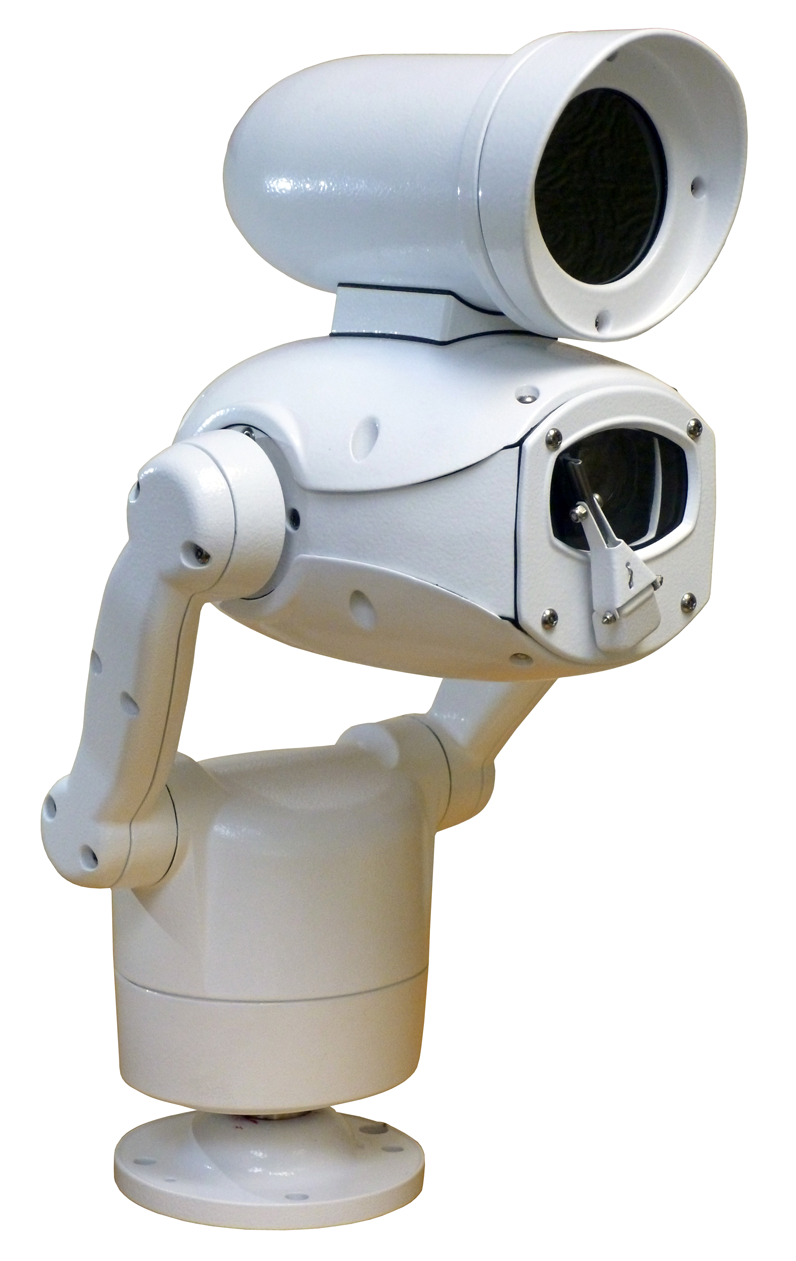
On the subject of whether cooled models are becoming easier to maintain, as that is one of the well documented headaches, Wyton admits that this is one element that is probably never going to change: “The reality is that the chemicals used [in cooled thermal cameras] are corrosive which eat away at the seals of the cooler and eventually gas escapes and you get a degradation in performance. That is what the service is, a re-gas of the cooler inside the unit.”
According to Wyton the cost-benefit analysis for cooled starts to add up where a longer reach is a prerequisite: “The requirement for that would be borders so it is mainly governmental type projects.”
Realistic resolution
Resolution-wise Wyton admits that – relative to conventional visual cameras – thermal might still seem to be in the ‘dark ages’ but, when put in the context of what thermal is there to do, he feels it is actually still pretty good: “The resolution for thermal can be 640 x 512 pixels and we also use a two megapixel Sony HD day/night module. The lack of detail in thermal doesn’t show-up the way it would with a day/night because you are not looking for detail, it is about detection rather than an interrogation,” explains Wyton.
Returning to the streaming of two images – the thermal and day/night – Wyton points out that new technologies are coming on track all the time to simplify how this is, ultimately, presented: “Image fusion, for example, is making it easier for operators because, obviously, if you have a fused image of day/night with thermal that makes for a very formidable option. It is not standard, we buy it in from a third party, but already we have a couple of projects underway where they want to utilise image fusion.”
Perimeter protection
David Montague, Sales Director – Security for FLIR Systems in EMEA, suggests that the typical use case for thermal is to have a camera looking down the fence line: “You can have software on there, which trips an alarm if a person goes over the tripwire.” He adds that the benefit of combining this with FLIR’s TRK encoder – for example – is the ability to handover to a Pan Tilt Zoom to track the target.
Montague certainly believes that thermal is a good fit at sites with extensive perimeters like airports, for example, where there may be a requirement to detect people when they compromise a fence-line: “You need a lot of conventional CCTV cameras compared with thermal cameras to cover the same area,” explains Montague.
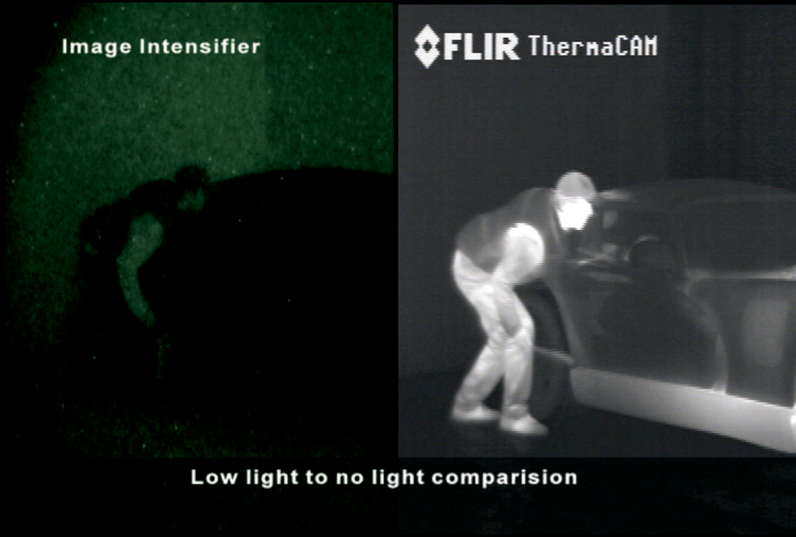
Beyond the individual thermal cameras themselves, FLIR is setting the pace for smarter perimeter surveillance through FLIR Thermal Fence, a ‘multi-dimensional’ perimeter security solution which, according to the company, is designed to offer an instant, automated, threat detection and visual threat assessment capability. To achieve this, Thermal Fence combines the capabilities of FLIR’s thermal security cameras with its FLIR Sensor Manager (FSM) control and management software. This means that, not only is there the potential with FLIR Thermal Fence to bring together thermal security cameras and to apply thermal video analytics across the perimeter of a site – which is a good capability in its own right, but, to work with inputs from a multitude of IP compatible non-video alarm sensors such as shaker fences, RFIDs, microwave systems, fibre and radars.
In fact thermal cameras have a reputation for being an excellent option for analytics as they tend to produce lower false alarm rates – compared to normal cameras – and there isn’t the need for the same degree of lighting. Continuing on the analytics theme, the desire to build-in analytics was underscored recently when FLIR Systems announced the release of the FC-Series ID thermal security camera in EMEA. This features edge analytics to allow the creation of ‘custom trip wires and regions of interest’ and, FLIR says, is capable of determining human or vehicle intrusions without human intervention.
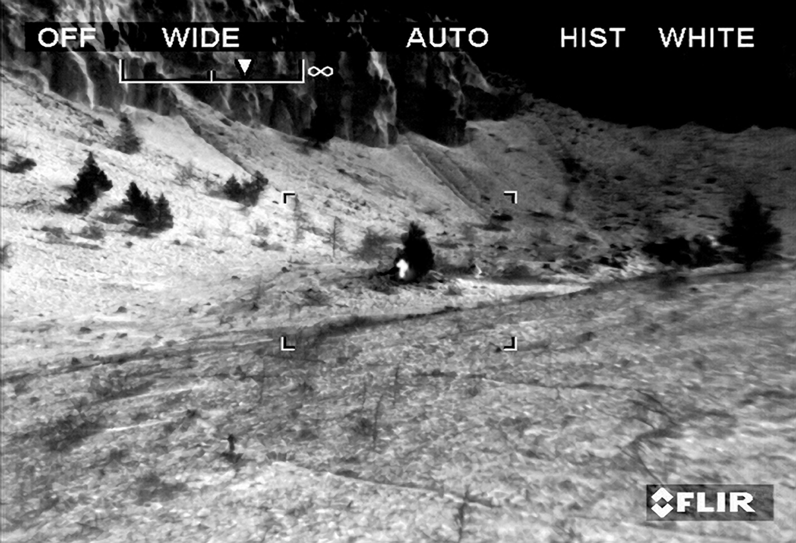
New solutions
Interestingly many vendors outside the realm of the thermal specialists are looking to stake their claims to the lucrative security market for thermal cameras. It was certainly evident at IFSEC 2016 that Hikvision was one video surveillance equipment manufacturer with ambitious plans in this direction. Peter Ma (pictured bottom left), who is a Product Manager with the company’s UK team confirms that Hikvision is seeking to roll out a new range of thermal camera models in Q3 across its key markets. These are to be based around 640 x 480 resolution, including: a bullet camera; a dual lens camera with a 1080p visible sensor in addition to the thermal, and a PTZ camera.
Ma explains why a higher resolution makes sense here: “With higher resolution you can see more detail and a longer distance which helps with our intelligent functionality like line crossing, intruder detection and fire detection.”
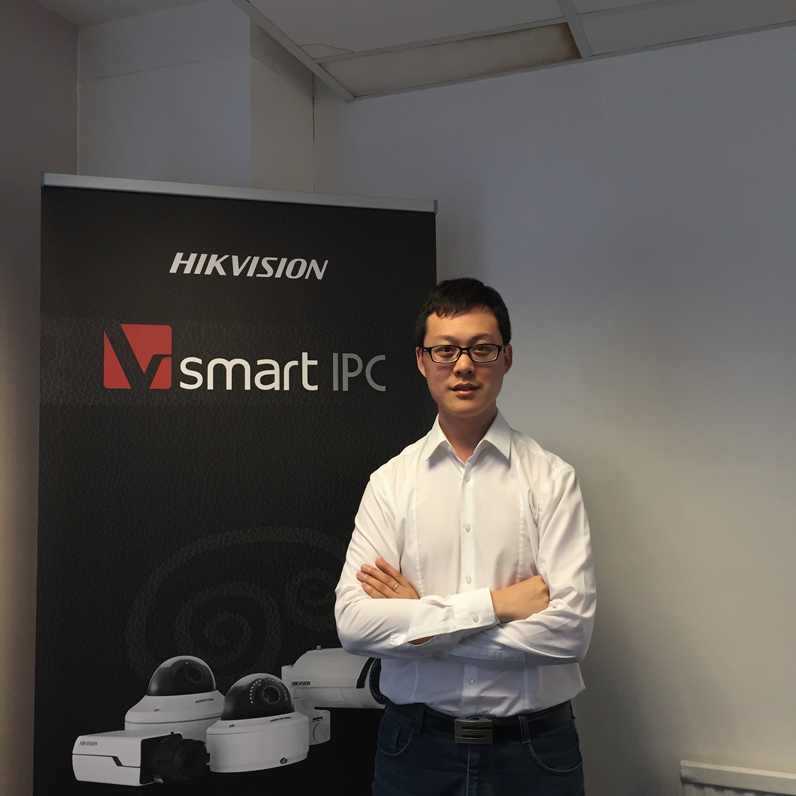
Going mobile
As mentioned with the downward trajectory in thermal camera pricing, and enhanced performance on the uncooled front, there is definitely room for thermal camera technology to stretch its legs outside of high end applications. Thermal technology is even finding its way into the smartphone world as vendors bring out devices featuring, basically, a lightweight compact camera that can be fitted to smartphones. In the frame for this type of innovation are on-the-move users like security guards.
One pioneer of this type of solution is Opgal Optronic Industries, a leading global provider of thermal imaging solutions, which has come out with its Therm-App thermal mobile device. Claimed to be the industry’s first device for Android phones, the lightweight and compact camera with 384×288 pixel resolution is said to be ideal for security, law enforcement and search and rescue applications, enabling the tracking of vehicles up to 1.5 km and people up to 0.5 km away with its long range 19 mm lens – and for a wider view with a 6.8 mm lens.
When I spoke to Amit Mattatia, President and CEO of Opal, in the early days of Therm-App he was not expecting the solution to replace fixed thermal cameras that have their own performance advantages, he did feel however that: “The price and positioning of Therm-App is based around something that you can carry conveniently in your pocket and pull out when you need it most.” Potential professional users of Therm-App on-the-move could range from security guards, police officers and rescue teams: “When you can see a threat 1,500 or 500 metres away in complete darkness that is a massive advantage which until now we couldn’t provide for people on patrol.”
Up in the air
Although not security related, the deployment of a drone carrying a thermal camera to a wild fire which engulfed large swathes of the city of Fort McMurray and surrounding areas in northeast Alberta, Canada, with an estimated 220,000 hectares impacted and tens of thousands of people evacuated, underlines the potential of this technology. Transport Canada granted Ventus Geospatial Inc. approval to provide operational UAS (Unmanned Aerial Vehicle) assistance to the affected fire regions. This move allowed the Aeryon SkyRanger to fly over the forest fire area which is otherwise restricted airspace. Thanks to high resolution geo-located imagery and thermal infrared sensors the team at Ventus was able to utilise the SkyRanger to coordinate with and assess the firefighting efforts.
Speaking to Andrea Sangster, Senior Marketing Manager, from Canadian sUAS (small Unmanned Aerial Vehicle) specialist Aeryon Labs about why operating drones such as SkyRanger with thermal cameras makes sense in situations similar to Fort McMurray, she replies: “During emergencies an Unmanned Aerial Vehicle can often be deployed when a manned aircraft simply can’t because of smoke coverage or the location of the fire.” She goes on to say that drones, which can fly closer to the ground than traditional aircraft, offer a cost effective way of gathering aerial images and data to provide enhanced situational awareness regarding the source of the fire and associated hotspots; the best points of entry to buildings and where stranded people might be. Another advantage which Sangster reckons drones offer, over and above, other aerial vehicles is that an sUAS can be transported to the scene in a vehicle and deployed by only one person.
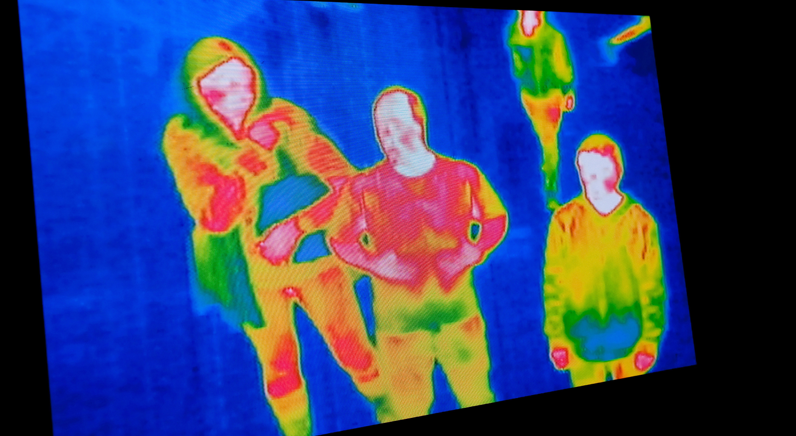
Aerostats in action
Another aerial platform where thermal camera technology is a good fit is the aerostat or blimp, especially when it comes to border security. Bruno Avena de Azevedo, Director and Co-founder of Brazilian aerostat specialist ALTAVE which has been keeping a watchful eye on the Olympics with a different solution, says that when it comes to border areas scanning the horizon from a height with thermal imagery and zooming in to do recognition is a valuable asset: “Our solution for this purpose, ALTAVE HORIZONTE, may also operate as a slave to a radar system, automatically pointing to targets detected by the radar signal, for example.”
Catching Shoplifters red handed
Shoplifters are being caught in the sights of a new tool in the battle against theft.Based on thermal images provided by FLIR’s FC-Series R radiometric camera, Nexo Group’s xPredator system identifies suspicious heat patterns on shoppers that could indicate the presence of hidden, stolen, products.
One of the most vulnerable areas for shoplifting for a supermarket is, undoubtedly, the fresh food department. Frozen meat, poultry and seafood, cheeses and beverages, and other liquid products, are also very popular among shoplifters. Swiss security technology provider Nexo Group SA has been focusing on the problem of shoplifting for many years by creating innovative solutions that help business owners prevent the loss of their inventory. “Shoplifting is a reflection of the economic crisis that is hurting more and more businesses,” says Alessio Bua, Business Developer at Nexo Group. “Preventing shoplifting and managing inventory shrinkage is one of the few areas in which improvements can be made.”
A key issue which other retail security solutions struggle to address is when a shoplifter actually conceals a stolen product in his or her clothing or bag. Basically it is very hard to see whether something has been stolen. In order to tackle this dilemma, Nexo Group collaborated with Italian security research and development company Sefitalia, to develop a groundbreaking anti-theft solution, called xPredator, especially focused on the retail and food sectors. In operation, XPredator makes use of a thermal imaging camera from FLIR and smart Thermal Visual Tracking (TVT) software created and developed by Nexo to detect stolen goods that are hidden under clothing.
“XPredator works on the principle of heat energy coming off the environment and looks for heat differences between the stolen goods and the rest of the human body,” says Alessio Bua. “It gives retailers the ability to very accurately identify stolen goods from supermarkets and deter shoplifters who with complete nonchalance hide cheese, ham, canned tuna and even high-quality whiskey and vodka bottles in bags or pants and even in coolers.”
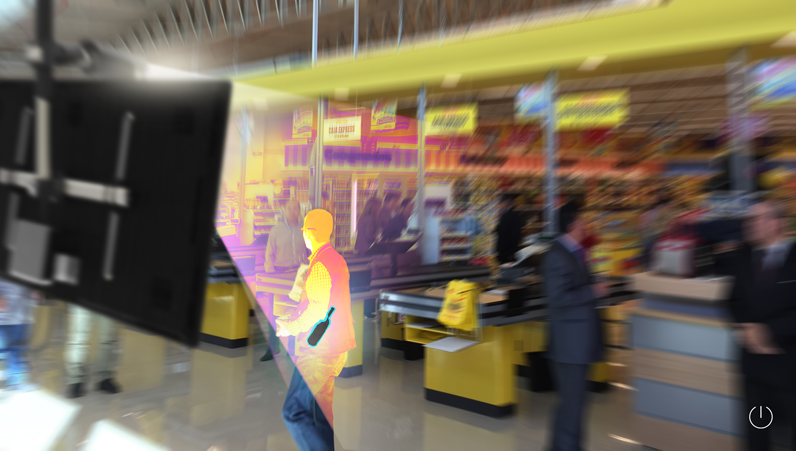
Milestone integration
For its part, Dahua Technology, a world-leading video surveillance solution provider headquartered in Hangzhou, China recently announced that all ranges of a new smart thermal network camera are now integrated with the Milestone XProtect Video Management Software.
Dahua says that its smart thermal network camera series has adopted a sensor that makes the cameras capable of detecting tiny differences in temperature, achieving higher detection accuracy, and operating in complete darkness and adverse weather conditions. In addition, according to Dahua, the cameras combine intelligence, efficiency, and high performance such as smart detection, smart analysis, smart perception, smart tracking and smart control.
The Dahua thermal network cameras that can integrate with Milestone XProtect VMS include: a thermal hybrid PTZ camera, a hybrid speed dome camera, a thermal bullet camera and a thermal dome camera.
Market matters
Speaking to Oliver Philippou, Senior Analyst at IHS, last year, after he had produced a new report on the uncooled camera market, Philippou told me at the time that for 2014 commercial security applications amounted to 245 million dollars and was expected to more than double to 500 million dollars by 2019.
Philippou also revealed that he was anticipating a shift away from 17 micron sensors to smaller pixel pitch sensors: “Various sensor suppliers are going to be offering smaller micron sizes of 12 microns or 10 microns.”
So what are the practical implications of this size reduction for a prospective purchaser? Well Philippou reckoned that this is likely to fuel a further fall in price for uncooled camera models: “The sensor price is a large part of what makes up the overall cost of a thermal camera and by using smaller micron sizes you necessarily reduce your manufacturing price.” Added to this, Philippou explained that smaller pixel pitch sensors allow for smaller lenses.
There is certainly a great deal of untapped potential with thermal where security is concerned, especially when figures giving the value of the overall global market for infrared imaging are factored in. According to an analysis by Research and Markets the market is set to grow at a CAGR of 8.2 per cent between 2016 and 2022, to reach 11.36 billion dollars. This is attributed to the surge in demand for infrared imaging in nearly all commercial applications to the advantages of uncooled technology and the decreasing cost of IR detectors as uncooled is less expensive compared to cooled.
Uncooled is cool
Although dramatic at first glance, when you consider all the areas of commercial security where thermal technology is starting to make its presence felt, and the innovations coming down the track, the predicted growth of the uncooled camera market seems more than realistic.
[su_button url=”https://www.securitynewsdesk.com/newspaper/” target=”blank” style=”flat” background=”#df2027″ color=”#ffffff” size=”10″ radius=”0″ icon=”icon: arrow-circle-right”]For more stories like this click here for the Security News Desk Newspaper[/su_button]













